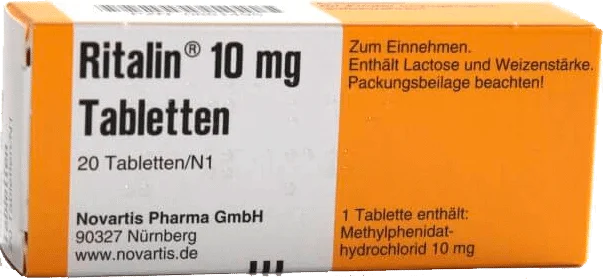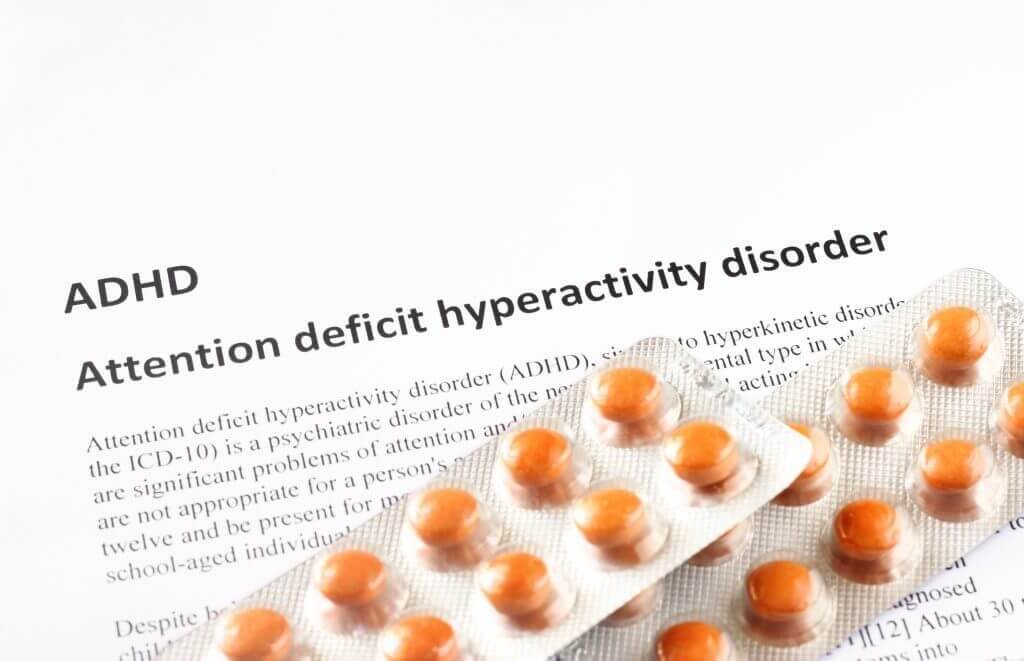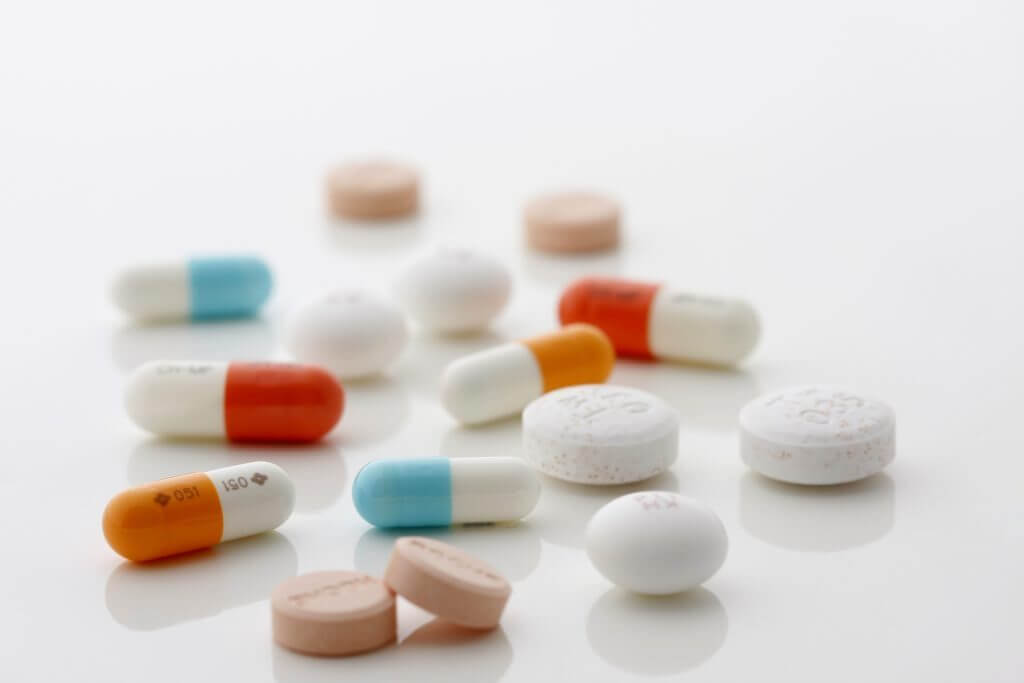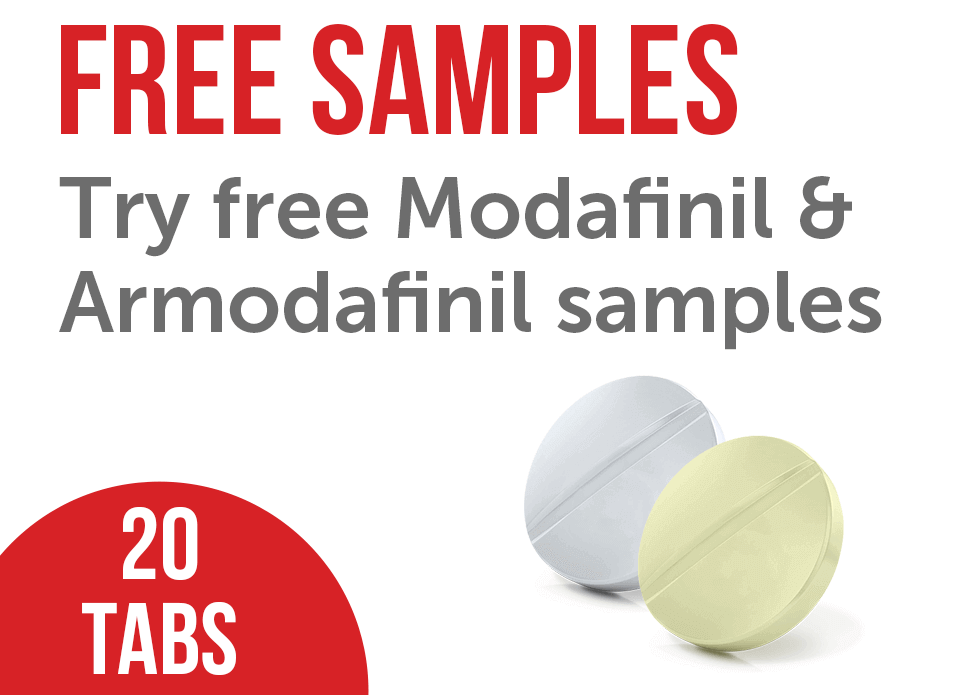In the search for the best smart drugs on the market, many nootropics users are constantly comparing new options, with older options.
Modafinil and Ritalin are both popular central nervous system stimulants. They’ve been used by millions of people worldwide with great results in wakefulness and productivity.
Some people even mix the two for a combined effect.
Here we discuss what makes these two drugs different, what makes them the same, and which one is the best option for you.

Why do People Take Smart Drugs?
There are many reasons someone would want to take a smart drug.
The Most Common Reasons for Taking Smart Drugs Include:
- To boost performance at work
- To improve efficiency while studying
- To treat a cognitive disorder like narcolepsy or ADHD
- To perform at a higher level athletically
- To increase reaction times for E-Sport competitions
Smart drugs are thought to provide an unfair advantage in the workplace. It allows people to do their jobs better, faster and longer than the average person.
The University of Oxford even wrote an entire post about smart drugs on their blog and appeared to be pretty upset about them, calling them an “unfair advantage.”
This is the primary reason someone would take them outside of the prescribed uses.
They want to get a step up on their competition, score higher on tests, land a new deal for their company, or get through virtually any task with record times.
Exclusive offer to all our readers: ModafinilXL offers a free sample pack of generic modafinil from India delivered by mail straight to your doorstep. It's already in your cart >>>
Modafinil is an excellent product; it really helps give me an extra boost when working two jobs; one late night job. It also helps my mood and overall well being. No side effects, works like a charm.

Smart Drugs Like Modafinil & Ritalin Make us More Alert
Have you ever seen the movie Limitless? The one with Bradley Cooper where he takes a magical pill that makes him better at everything he does by a factor of 10?
The drug in the movie, NZT-48, doesn’t exist.
The real-life versions, modafinil, and Ritalin don’t increase intelligence.
They do, however, significantly increase productivity.
Both drugs work by hitting the “on-switch” in our brains when it would normally want to turn it off.
Hitting the on-switch allows us to stay vigilant on the tasks we’re working on for a longer period of time. Typically, after working for a few hours, the brain becomes slow and fatigued. When this happens, our efficiency at performing tasks involving virtually all areas of the brain, start to diminish.
The Causes of Fatigue in the Brain Include:
- Adenosine builds up in the brain (causing our neurons to fire slower)
- Dopamine levels diminish (causing our attention spans to disintegrate)
- Acetylcholine levels drop (making it harder to store and retrieve memories)
- Histamine is used up (making it more difficult to remain vigilant on the task at hand)
- Norepinephrine levels decline (making us feel less alert)
Our neurons fire slower, meaning it takes longer to transmit the same amount of information per second.
As neurotransmitter levels begin to decline, we experience a drop-off in attention spans and memory.
Buying Smart Drugs Online
Most pharmaceutical smart drugs are prescription only, including modafinil and Ritalin.
This means that getting the drug will require a visit to the doctor and a reason for the prescription.
The only way a doctor can prescribe these drugs is if there is an indication that you suffer from either “excessive daytime sleepiness” or are diagnosed with ADD or ADHD.
Doctors will not give a prescription for these drugs on the basis that you need it to boost productivity.
But there’s still a way to get them.
Some online sources, such as ModafinilXL.com offer generic smart drugs like modafinil at much lower prices.
Instead of the expensive brand-name options like Provigil® and Nuvigil®, they offer high-quality generics for a fraction of the price.
The online nature of these vendors allows them to sell modafinil without a prescription, making it the number one place to get modafinil for productivity and work performance.
- Modalert 200mg
- Modvigil 200mg
- Waklert 150mg
- Artvigil 150mg
-
Modalert 200mg
-
Company
-
Core Ingredient
Modafinil
-
Price from
$0.53 in 7 days $2.99 in 3 days >
-
Dosage
Between
50 – 200 mg per day -
Coupons
Pay with crypto -20%ENJOYMXL10 for -10%
-
Good for
-
Alertness
-
Mental Focus
-
Agility
-
Energy
-
Motivation
-
-
Effect hours
-
Onset 1 hr.
-
Peak 6 hr.
-
Drop 2 hr.
- Buy Now
-
Modvigil 200mg
-
Company
-
Core Ingredient
Modafinil
-
Price from
$0.39 in 7 days > $2.99 in 3 days >
-
Dosage
Between
50 – 200 mg per day -
Coupons
Pay with crypto -20%ENJOYMXL10 for -10%
-
Good for
-
Alertness
-
Agility
-
Energy
-
Cognition
-
Motivation
-
-
Effect hours
-
Onset 2 hr.
-
Peak 5 hr.
-
Drop 3 hr.
- Buy Now
-
Waklert 150mg
-
Company
-
Core Ingredient
Armodafinil1
-
Price from
$0.59 in 7 days > $2.99 in 3 days >
-
Dosage
Between
50 – 150 mg per day -
Coupons
Pay with crypto -20%ENJOYMXL10 for -10%
-
Good for
-
Mental Focus
-
Agility
-
Energy
-
Cognition
-
Motivation
-
-
Effect hours
-
Onset 3 hr.
-
Peak 8 hr.
-
Drop 1 hr.
- Buy Now
-
Artvigil 150mg
-
Company
-
Core Ingredient
Armodafinil
-
Price from
$0.41 in 7 days > $2.99 in 3 days >
-
Dosage
Between
50 – 150 mg per day -
Coupons
Pay with crypto -20%ENJOYMXL10 for -10%
-
Good for
-
Mental Focus
-
Agility
-
Cognition
-
Motivation
-
-
Effect hours
-
Onset 2 hr.
-
Peak 6 hr.
-
Drop 2 hr.
- Buy Now
How Do Smart Drugs Like Modafinil & Ritalin Work?
Both Ritalin and modafinil have similar effects in the brain, all working to increase the feeling of being alert and awake.
They’re both considered central nervous system stimulants, which means that they force the “on switch” in the brain.
They rely on different mechanisms to achieve this, however.
Let me explain.

1. How Ritalin Works
Ritalin is the brand name for methylphenidate.
The main benefit of the drug is to increase dopamine levels in the brain.
This is useful because dopamine is one of the primary neurotransmitters involved with focus and concentration.
This may get a little technical, but here’s exactly how it works.
Ritalin blocks 50% of dopamine transporters (DAT) in the brain [1].
These dopamine transporters are tasked with moving dopamine into the neurons after they’ve released. Once transported, the dopamine is then broken down into its individual parts, ready to be reused elsewhere.
Its effects are especially good at enhancing extracellular dopamine in an area known as the basal ganglia of the brain but may cause some damage to this specialized region over time [4].
By inhibiting the dopamine transporters, Ritalin increases the amount of dopamine in the synapses, allowing us to concentrate on tasks more easily.
This mechanism is especially useful for the condition of ADD or ADHD because dopamine levels are often found in lower amounts in people with this condition [2].
Dopamine is also a vital part of the reward center in the brain.
If levels are too low, the brain needs to work extra hard to stimulate itself, causing the characteristic fidgety, low attention symptoms common in ADHD sufferers.
The Results of Low Dopamine May Include:
- Fidgety behavior
- Frustration
- Inability to concentrate on a task for extended periods of time
- Learning disabilities
There Are Two Forms of Methylphenidate (Ritalin)
Both modafinil and Ritalin come in two chemical forms, called enantiomers.
Modafinil comes in an R-modafinil, and S-modafinil, while methylphenidate comes in d-threo-methylphenidate and l-threo-methylphenidate.
Enantiomers are compounds that have the same structure but are mirror images of each other. This is common in the world of chemistry.
Some compounds have no difference from one enantiomer to the next, while others— like Ritalin— have a big difference between the two.
Only d-threo-methylphenidate blocks dopamine receptors, which has lead to the development of an enantiopure (only one enantiomer) version called Focalin.
This compound only contains d-threo-methylphenidate, and therefore has slightly stronger effects on dopamine overall.
Other Forms of Methylphenidate Include:
- Aptensio XR
- Concerta
- Cotempla XR-ODT
- Focalin
- Metadate CD
- Metadate ER
- Methylin
- QuilliChew ER
- Quillivant XR

What’s the Dose for Ritalin?
The dose of Ritalin can vary a lot — most people take 20–30 mg per day.
Others need more (40–60 mg per day), while others need less (10–15 mg per day).
The Right Dose Depends on a Few Factors:
- How sensitive the individual is to the drug
- How severe the symptoms are
- How much the individual taking it weighs
In most cases, if prescribed Ritalin by a doctor, they will give the drug in the smallest dose, then after a week or two, they will reassess and decide whether a larger dose is necessary or not.
Unlike modafinil, the effects of Ritalin usually won’t last the entire day, so multiple doses are needed every couple of hours to maintain its effects.
Most people who take Ritalin will take it about 2 or 3 times per day. Starting before breakfast, then about 30 minutes before lunch, then again between 2 and 4 pm.
The extended-release versions don’t need to be taken as frequently, usually only once or twice per day.
How Long Does Ritalin Last?
The effects of Ritalin tend to last about 3 hours. The extended-release is a bit better, lasting around 8 hours.
When taking the standard (non-extended release) version of the drug, it needs to be taken in increments of about 4 hours to maintain its effects throughout the day.
Ritalin reaches peak concentrations about 60–90 minutes after consumption [1].
So it takes about an hour before effects are felt, followed by about 3 hours of high productivity before another dose of Ritalin needs to be taken.
What are the Side-Effects of Ritalin?
Like any pharmaceutical medication, there are some side effects of Ritalin. Most of these side effects are shared by all stimulants, including modafinil.
The most common side effects when taking Ritalin are insomnia, fast heartbeat, weight loss, and headaches.
Mild Side Effects of Ritalin Include:
- Insomnia
- Mood changes
- Fast heartbeat (Tachycardia)
- Loss of appetite
- Weight loss
- Nausea
- Stomach pain
- Headaches
More Severe Side Effects of Ritalin Include:
- Chest pain
- Difficulty breathing
- Dizziness
- Aggression
- Paranoia
- Seizures
- Muscle twitches
- Vision disturbances
- Painful erection

2. How Modafinil Works
Modafinil, like Ritalin, is a central nervous system stimulant.
Similarly to Ritalin, it works by increasing dopamine levels in the brain by inhibiting the dopamine transporters.
Instead of focusing most of its effects on dopamine, it offers additional benefits on other regions of the brain like the orexin pathway, and norepinephrine reuptake.
Orexin is a neuropeptide in the brain that carries out the effects of the wakefulness portion of the sleep-wake cycle.
The sleep-wake cycle is what makes us feel awake during the day, and tired at night.
It’s lined up according to our habits, as well the natural rhythm of night and day. When the sun comes up, it stimulates the waking side. When the sun goes down, it stimulates the sleeping side of the system.
Modafinil overrides this system by directly stimulating the waking portion of the sleep-wake cycle.
When the wakefulness switch is “flipped on,” orexin is released from the hypothalamus and travels all around the brain telling it to wake up.
The results are a state of hypervigilance even when we would otherwise be tired. It allows us to work longer amounts of time, getting more done.
Medically, the drug is specific for conditions that involve “excessive sleepiness.” This includes conditions like narcolepsy and side effects of other conditions like chronic fatigue syndrome and multiple sclerosis.
There Are Two Forms of Modafinil
Just like Ritalin, there are two forms of modafinil (enantiomers).
These are R-modafinil and S-modafinil.
The R-modafinil enantiopure product of modafinil is called Nuvigil®, Artvigil, or Waklert.
Other forms of modafinil include:
There are a number of different forms of modafinil, including brand name and generic versions of the drug.
Although most are very similar, our favorite is Modalert and Modvigil. They offer an excellent mix of both cost and benefits.
- Modalert 200mg
- Modvigil 200mg
- Waklert 150mg
- Artvigil 150mg
-
Modalert 200mg
-
Company
-
Core Ingredient
Modafinil
-
Price from
$0.53 in 7 days $2.99 in 3 days >
-
Dosage
Between
50 – 200 mg per day -
Coupons
Pay with crypto -20%ENJOYMXL10 for -10%
-
Good for
-
Alertness
-
Mental Focus
-
Agility
-
Energy
-
Motivation
-
-
Effect hours
-
Onset 1 hr.
-
Peak 6 hr.
-
Drop 2 hr.
- Buy Now
-
Modvigil 200mg
-
Company
-
Core Ingredient
Modafinil
-
Price from
$0.39 in 7 days > $2.99 in 3 days >
-
Dosage
Between
50 – 200 mg per day -
Coupons
Pay with crypto -20%ENJOYMXL10 for -10%
-
Good for
-
Alertness
-
Agility
-
Energy
-
Cognition
-
Motivation
-
-
Effect hours
-
Onset 2 hr.
-
Peak 5 hr.
-
Drop 3 hr.
- Buy Now
-
Waklert 150mg
-
Company
-
Core Ingredient
Armodafinil1
-
Price from
$0.59 in 7 days > $2.99 in 3 days >
-
Dosage
Between
50 – 150 mg per day -
Coupons
Pay with crypto -20%ENJOYMXL10 for -10%
-
Good for
-
Mental Focus
-
Agility
-
Energy
-
Cognition
-
Motivation
-
-
Effect hours
-
Onset 3 hr.
-
Peak 8 hr.
-
Drop 1 hr.
- Buy Now
-
Artvigil 150mg
-
Company
-
Core Ingredient
Armodafinil
-
Price from
$0.41 in 7 days > $2.99 in 3 days >
-
Dosage
Between
50 – 150 mg per day -
Coupons
Pay with crypto -20%ENJOYMXL10 for -10%
-
Good for
-
Mental Focus
-
Agility
-
Cognition
-
Motivation
-
-
Effect hours
-
Onset 2 hr.
-
Peak 6 hr.
-
Drop 2 hr.
- Buy Now
Other Versions of Modafinil Include:
- Modalert (Sun Pharmaceuticals)
- Modvigil (HAB Pharmaceuticals)
- Alertec (Cephalon Inc)
- Provigil (Cephalon Inc)
- Vilafinil (Centurian Labs)
- Modaheal (Healing Pharmaceuticals)
- Modafresh (Sunrise Pharmaceuticals)
- Modafil MD (INTAS)
- Modawake (HAB Pharmaceuticals)

What are the Side-Effects of Modafinil?
Modafinil shares many of the same side effects as Ritalin and other central nervous stimulants like Adderall.
Mild Side Effects of Modafinil Include:
- Insomnia
- Headaches
- Poor appetite
- Diarrhea
- Anxiety
- Dry mouth
- Fast heartbeat
More Severe Side Effects of Modafinil Include:
- Mood disturbances
- Hallucinations
- Fever
- Severe depression
- Chest pain
- Severe skin reactions (Steven Johnson Syndrome)
- Chest pain
- Heart palpations
Modafinil & Ritalin: How do They Compare?
Modafinil and Ritalin are used for the same conditions but have some slightly different effect profiles nonetheless.
In general, Ritalin is better for boosting dopamine levels, while modafinil is better for stimulating wakefulness.
In terms of duration of effects, modafinil lasts significantly longer than Ritalin.
Comparing the Effects of Modafinil vs. Ritalin
| # | Modafinil | Ritalin |
| Effect on dopamine | Mild Increase | Strong Increase |
| Effect on wakefulness | Strong Increase | Mild Increase |
| Side Effects | Mild Side Effects Common | Mild Side Effects Common |
| Duration Of Effects | 14–18 hours | 3–4 hours |
Can I Combine Modafinil & Ritalin?
Some people have started combining modafinil and Ritalin to boost both of their benefits.
When working on tasks at work or school they want to be more awake (modafinil is best for this) and have better concentration (Ritalin is best for this).
They combine the two to get the best of both worlds.
This combination will affect everyone differently. Some people report that the combo turned them into a machine while studying for their exams, but made it more difficult during the exam.
Other reports suggest similar findings, saying that the combo helps with concentration, but can ultimately lower memory recall.
Users on forums like Reddit and Longecity are reporting improvements in both concentration and memory with a smaller dose of each (100 mg modafinil and 10 mg Ritalin every 4 hours).
Ultimately, you will need to do some self-experimentation to get a feel for how this combination affects your productivity and performance.
We recommend starting with a smaller dose, and building up slowly until you know how it works for you.
References
- Volkow, N. D., Fowler, J. S., Wang, G., Ding, Y., & Gatley, S. J. (2002). Mechanism of action of methylphenidate: insights from PET imaging studies. Journal of attention disorders, 6(1_suppl), 31-43.
- Li, D., Sham, P. C., Owen, M. J., & He, L. (2006). Meta-analysis shows significant association between dopamine system genes and attention deficit hyperactivity disorder (ADHD). Human molecular genetics, 15(14), 2276-2284.
- Coghill, D., Banaschewski, T., Zuddas, A., Pelaz, A., Gagliano, A., & Doepfner, M. (2013). Long-acting methylphenidate formulations in the treatment of attention-deficit/hyperactivity disorder: a systematic review of head-to-head studies. BMC psychiatry, 13(1), 237.
- Wong, Y. N., King, S. P., Simcoe, D., Gorman, S., Laughton, W., McCormick, G. C., & Grebow, P. (1999). Open‐label, single‐dose pharmacokinetic study of modafinil tablets: influence of age and gender in normal subjects. The Journal of Clinical Pharmacology, 39(3), 281-288.





